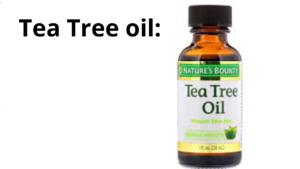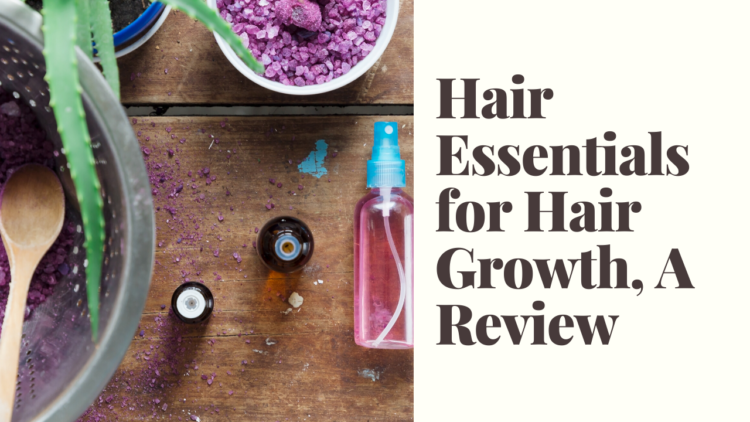Essential oils (or simply EOs) are a popular natural hair care product. Sadly, when it comes to hair oils, not many people understand how different types of oil should be used and what affect they have on our hair and scalp. In this article, I’m going to talk about what essential oils are, how to use them and how they differ from other types of hair oils.
Essential Oil Basics
Let’s begin with the name. Oils are called essential because they carry a very strong essence (or scent) of the plants that they have been extracted from. Essential oils penetrate into the deeper layers of the skin and should be used with care – only a few drops of EO are usually used.
Now, most hair care regimens recommend mixing EOs with carrier oils such as castor, almond, olive, jojoba, sesame and so on. Carrier oils help to hold essential oils, making them easier to apply and preventing any unwanted side-effects of using strong EOs. Hard oils, such as coconut oil, are rarely mixed with EOs.
Popular Essential Oils
Below are quick descriptions of some of the most popular essential oils out there.
Peppermint oil: A very strong essential oil that has a strong scent and a pleasant cooling effect on the scalp. Peppermint oil should not be used undiluted, because it can easily burn the skin causing serious damage. Normally just 2-3 drops of peppermint EO is enough to give any hair oil mixture pleasant cooling and refreshing properties. The main benefit of using peppermint oil on hair is that it stimulates blood flow to the scalp, thus helping your body deliver more nutrients and minerals to the hair follicles.

Tea Tree oil: Another popular EO that is known for its superb fungus-fighting properties. Tea tree oil is often used to treat issues with itchy and flaky scalp. These annoying conditions are usually caused by fungus that can also cause dandruff and tea tree oil is a good all-natural way to keep this fungus growth under control.
Remember that tea tree oil should not be applied undiluted in its pure form as it may cause damage/burns. Mix it with a carrier oil or put a little tea tree EO into your normal shampoo/conditioner. Another thing to keep in mind is that too much tea tree oil (or simply using it too often) can lead to scalp/skin dryness, which is not a good thing.

Rosemary oil: This oil has a very, very strong scent that is also quite pleasant. For this reason, it is often added to other oils to improve the way your hair/skin smells after an oil treatment. Some people claim that rosemary EO can help with hair regrowth, though it’s really hard to confirm these reports because rosemary oil is practically always used as an ingredient in a mix of different oils. Do not use rosemary oil undiluted!
Lavender oil: This commonly used EO is a little controversial as it is thought to increase estrogen production, especially in young boys. The effects that this strange property has on adults are not very well studied. Lavender oil is often used as an ingredient in complex EO and carrier oil mixes as well as found in many hair care products.
Ylang Ylang oil: Another oil that has a very strong scent and should be used sparingly. Ylang Ylang smells a bit like jasmine and can be overwhelming if overused. Whether this EO helps with hair growth is very difficult to tell, but it does seem to help moisturize and relieve tension from the scalp! Just remember to mix Ylang Ylang with other EOs as well as some carrier oil/oils – do not use it on its own!
Thyme: Used to treat various skin, ear and mouth infections, thyme oil is also found in most potent hair growth products. It is not clear exactly how and why it works so well to treat certain types of hair loss, but it has been proven to work over and over again (only when used in a special mix with other oils though)!
How to Use Essential Oils
One thing that you must remember about essential oils is not to use them undiluted! They are usually very strong and, if overused, can cause serious skin burns as well as other health issues (such as high blood pressure, headaches and so on). People with high blood pressure should avoid using rosemary oil.
Now, for hundreds of years people have been using EOs to treat hair loss, so they are definitely worth trying. Most people either mix 1-3 drops of their favorite EO into shampoo/conditioner or add some to their pre-shampoo oil treatments.
Another thing about EOs that seems to come up time and time again is that they work best when used in conjunction with other oils. This makes it very difficult to pinpoint exactly why EOs help with hair loss and growth.
One of the most popular (and potent) essential oil recipes for hair growth is:
- 2 drops of Cedarwood EO
- 2 drops of thyme EO
- 2-3 drops of rosemary EO
- 2-3 drops of lavender EO
- 3-5 teaspoons of grape seed oil
- About half a teaspoon of jojoba oil
Mix all of the above oils together and then massage the mixture into your scalp (especially the areas where hair loss is occurring). Wrap your head in a towel or something to keep it warm. Now, depending on how your scalp and hair react to this treatment, you have two choices: either wait 30 minutes and then wash it all out, or keep it in overnight and wash your hair in the morning. Do not overdo this; just two treatments per week should be enough.



Comments are closed.